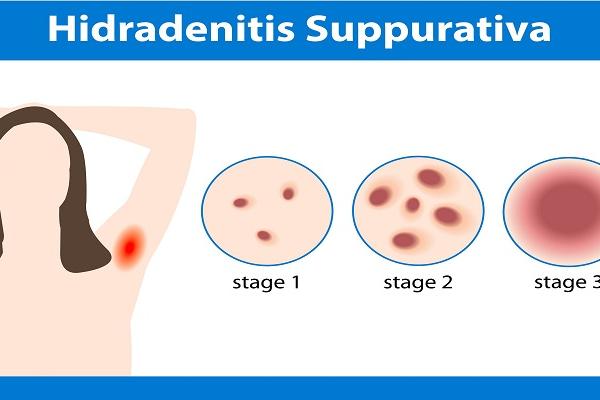Hidradenitis Suppurativa (HS), a chronic skin disease known as "Canine Mammary Disease" among the people, is seen in one out of every 100 people all over the world. Yeditepe University Hospitals Plastic, Reconstructive, and Aesthetic Surgery Specialist, who said that the reason for its emergence is not known exactly, emphasized that the surgical methods had satisfactory results in patients who did not respond to medication treatment.
What's Hidradenitis Suppurativa (HS
Hidradenitis Suppurativa (HS), which occurs after inflammation of the hair follicles, especially in the fold areas where sweat glands are dense, and progresses with painful and running swellings, affects daily life by reducing the quality of life. Noting that although the disease can be seen at any age, it mostly occurs in the 20s and is seen more in women than in men, Yeditepe University Koşuyolu Hospital Plastic, Reconstructive and Aesthetic Surgery Specialist also stated that its incidence decreases after the age of 50.
Disease Is Not Known Among the Public
Stating that there are different treatment options for Canine Mammary Disease, our Plastic, Reconstructive, and Aesthetic Surgery Specialist said, “For Hidradenitis Suppurativa (HS), a disease that may include a genetic predisposition, but is not contagious, early diagnosis and long-term treatment help control pain and promote wound healing. However, if this disease is mistaken for acne or abscess and a doctor is not consulted, the correct diagnosis may not be made for years. Studies show that the diagnosis of the disease is made 7 years late on average. Unfortunately, the familiarity and awareness of the disease among the public is low.”
Last Option: Surgical Treatment
Pointing out that Hidradenitis Suppurativa (HS) is a disease that needs to be evaluated multidisciplinary together with a dermatologist, our specialist said, “If the disease does not respond to medication and medical treatment, surgical methods are used. Deciding on the decision and timing of the surgery together with the dermatologist provides more effective results.” Our Plastic, Reconstructive, and Aesthetic Surgery Specialist stated that the abscess should be drained in order to quickly relieve pain in the presence of an acute abscess, and explained other methods as follows: “Regional excision is applied in small lesions. In large lesions, the relevant area should be completely removed, the tissue should be transferred from the adjacent or distant area and closed, or it should be left to heal on its own. This method is defined as wide excision.”
Saying that Hidradenitis Suppurativa (HS) is a chronic and recurrent disease, Yeditepe University Hospital Plastic, Reconstructive, and Aesthetic Surgery Specialist said, “Removing the relevant regions wider will reduce this possibility. It is important to follow the doctor's instructions according to the surgery performed. In order to prevent the recurrence of the disease after surgery, it is necessary to avoid smoking, lose weight and keep the weight under control.”
Fast Return to Daily Life
Stating that hospitalization for 1-2 days may be sufficient on average, based on the condition of the person after the canine mammary disease surgeries, our Plastic, Reconstructive, and Aesthetic Surgeon Specialist also added: “The person can start eating and taking short walks the same day. The stitches are removed when recommended by the physician, and the patient can return to his/her daily life at the end of the week. As in all surgical operations, some scarring remains depending on the width of the surgical site. However, these scars lose their visibility significantly over time.”

